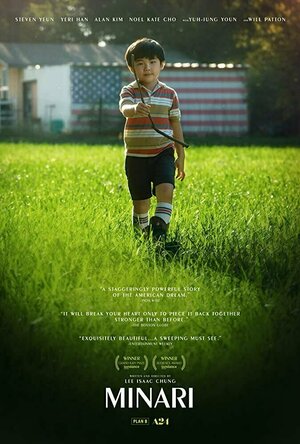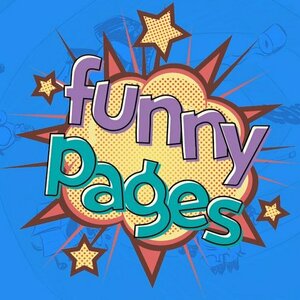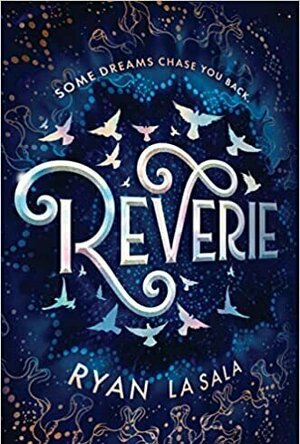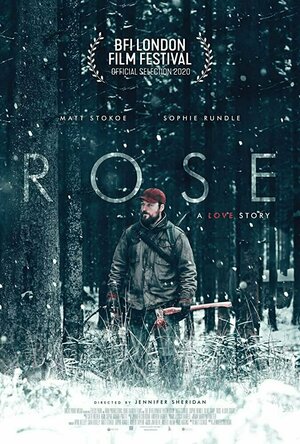Search
Search results

Femisphere Pregnancy Tracker
Medical and Health & Fitness
App
Awarded by the IFA+ Summit as well as the the German Accelerator (German Federal Ministry of...
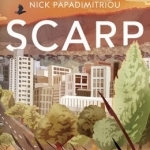
Scarp
Book
es it's difficult to define exactly what this book is: it mixes autobiography, local history,...
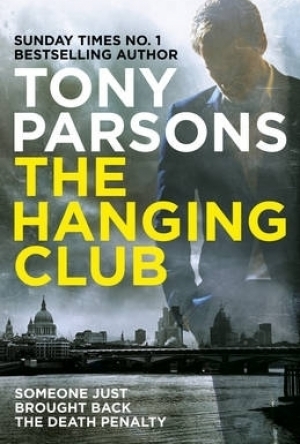
The Hanging Club
Book
"Tony Parsons puts you right there in every scene he writes. I love that kind of storytelling and...
Phillip McSween (751 KP) rated All About Steve (2009) in Movies
Jun 15, 2020
A Movie About a Crossword Puzzle Designer? Ummm...
With a mindblowing 6% Rating on Rotten Tomatoes (mindblowing because it’s too high), All About Steve is the story of a crossword puzzle designer who travels across the country with the hopes of convincing a CNN newsreporter that they belong together. I can feel your excitement. It’s palpable.
Acting: 3
Have you ever seen a mouse try and get off of a glue trap? That’s the equivalent of the acting work in this movie. Let’s start with the woman of the hour, Sandra Bullock playing the leading role of Mary Horowitz. I couldn’t help but think as she runs through her lines, “Do you even want to be on set right now?” She reads the lines of her character like a robocaller at times. I can actually say that for quite a few of the actors that bought into this dud.
Beginning: 6
I’ve seen worse starts to movies, I’ll be honest. The career fair scene is actually pretty hilarious which is probably about the only nice thing I have to say about this movie. If the entire movie had been like this, the overall score would have been double. Unfortunately the movie still would have been shit.
Characters: 5
I’ve always said, if you hate the main character of a movie, there’s a good chance you’re going to hate the movie. That theory definitely holds true here as Mary pains me with every single scene I watch her in. And the way they paint Bradley Cooper’s character Steve out to be such a jerk is just wrong. I mean this a reverse Pepe Le Peu situation we got going on here but he is the one we’re supposed to be mad at? Nightmare.
Cinematography/Visuals: 5
Conflict: 1
Yeah, there’s nothing I care about that’s happening throughout the duration of this movie. I could care less about Mary’s quest to win Steve because it’s just wrong. She’s a psycopath! When I say, “Nothing to see here!” I mean it.
Entertainment Value: 2
Ok, so here’s why I gave it a 2 despite how dreadful the entire movie was: I kept waiting to see how much worse things would get. The further I went down the rabbit hole, things just got more and more painful. Ever watch elementary school kids play basketball? Pretty much the same kind of train wreck here.
Memorability: 0
Pace: 0
Considering this is one of the worst movies imaginable, it’s no secret that “snail’s pace” doesn’t do it justice. Getting through All About Steve almost requires much drinking. Sure, you can survive it sober. Not advisable.
Plot: 1
It’s a story that makes no sense revolving around characters that don’t have a single solid motivation to their name. Even when you think for a moment that things might redeem themselves, the movie manages to set itself on fire again. Lost count of the number of times I asked myself, “Where the hell is this going?”
Resolution: 3
Overall: 26
Maybe it was because I was tired. Maybe it’s because I think Sandra Bullock is beautiful and who the hell would be stupid enough to run from that? Maybe it was because I had just watched A Quiet Place right before and was blown away by how incredible it was. Or maybe…All About Steve is just a terrible terrible movie. Yeah, I think I’ll go with the latter.
Acting: 3
Have you ever seen a mouse try and get off of a glue trap? That’s the equivalent of the acting work in this movie. Let’s start with the woman of the hour, Sandra Bullock playing the leading role of Mary Horowitz. I couldn’t help but think as she runs through her lines, “Do you even want to be on set right now?” She reads the lines of her character like a robocaller at times. I can actually say that for quite a few of the actors that bought into this dud.
Beginning: 6
I’ve seen worse starts to movies, I’ll be honest. The career fair scene is actually pretty hilarious which is probably about the only nice thing I have to say about this movie. If the entire movie had been like this, the overall score would have been double. Unfortunately the movie still would have been shit.
Characters: 5
I’ve always said, if you hate the main character of a movie, there’s a good chance you’re going to hate the movie. That theory definitely holds true here as Mary pains me with every single scene I watch her in. And the way they paint Bradley Cooper’s character Steve out to be such a jerk is just wrong. I mean this a reverse Pepe Le Peu situation we got going on here but he is the one we’re supposed to be mad at? Nightmare.
Cinematography/Visuals: 5
Conflict: 1
Yeah, there’s nothing I care about that’s happening throughout the duration of this movie. I could care less about Mary’s quest to win Steve because it’s just wrong. She’s a psycopath! When I say, “Nothing to see here!” I mean it.
Entertainment Value: 2
Ok, so here’s why I gave it a 2 despite how dreadful the entire movie was: I kept waiting to see how much worse things would get. The further I went down the rabbit hole, things just got more and more painful. Ever watch elementary school kids play basketball? Pretty much the same kind of train wreck here.
Memorability: 0
Pace: 0
Considering this is one of the worst movies imaginable, it’s no secret that “snail’s pace” doesn’t do it justice. Getting through All About Steve almost requires much drinking. Sure, you can survive it sober. Not advisable.
Plot: 1
It’s a story that makes no sense revolving around characters that don’t have a single solid motivation to their name. Even when you think for a moment that things might redeem themselves, the movie manages to set itself on fire again. Lost count of the number of times I asked myself, “Where the hell is this going?”
Resolution: 3
Overall: 26
Maybe it was because I was tired. Maybe it’s because I think Sandra Bullock is beautiful and who the hell would be stupid enough to run from that? Maybe it was because I had just watched A Quiet Place right before and was blown away by how incredible it was. Or maybe…All About Steve is just a terrible terrible movie. Yeah, I think I’ll go with the latter.
Bob Mann (459 KP) rated Minari (2020) in Movies
Apr 23, 2021
Ensemble cast acting (2 more)
Music and Cinematography
Engrossing story
A Korean Hillbilly Elegy, done right
In "Minari", a struggling Korean immigrant family - the Yi's led by Jacob (Steven Yeun) and Monica (Yeri Han) - leave California for Arkansas farmland to seek a better life. While employed sexing chicks at a factory, Jacob dreams of farming the land on which they live to improve their lives. But will his obsession for this dream stand between him and his family?
The tale is told through the eyes of young David (Alan S. Kim), who is struggling with a hole in the heart and doubts about his mortality. The arrival of Monica's mother (Yuh-Jung Youn) is resented by David, but the woman is wise (as well as foul mouthed) and perhaps the pair will eventually learn to respect one another?
Positives:
- Gloriously bucolic cinematography (by Lachlan Milne) frames an engrossing story of an immigrant family striving for the American dream. The fact that it is semi-biographical for the writer/director Lee Isaac Chung (also Oscar nominated for both) makes it all the more fascinating.
- All of the leading cast work fabulously as an ensemble. Steven Yeun and Yuh-Jung Youn have all the Oscar nomination glory (with Youn as the Grandmother odds-on to win the Supporting Actress award on Sunday). But Yeri Han is also great and the film wouldn't work unless the two child actors (Alan Kim and Noel Cho) delivered, which they do in spades.
- The music, by Emile Mosseri, is strikingly good and - deservedly - also Oscar nominated.
Negatives:
- The ending. Now, I'm all for leaving things in a thoughtful way, allowing the viewer to ponder on things. But this ending was a little too obscure for me. You need to understand (with thanks to this article) that the vegetable Minari purifies (water), grows in unfavourable soils and only really thrives in its second season. Now, forgive me for not being 'up' on my Korean plant botany, but this was too much of a leap for me. For the uninitiated (I assume 95% of the audience) the ending will feel abrupt and unsatisfying.
Summary Thoughts on "Minari":
Having watched "Hillbilly Elegy" and "Minari" on consecutive nights, I was struck by the unexpected parallels between the films (over and above the Yi's calling themselves "Hillbillies"). Both feature a dysfunctional family (though less so here). And both also feature a lead character, from an impoverished background, trying to better themselves and follow the 'American dream'. And front and centre is the growing relationship between a young boy and their grandmother.
But there the similarities end. For I just loved the simplicity of the story-telling in "Minari". No fancy flashbacks and disjointed timeline here. And a sense that you were really in on the journey of both Jacob and his farm and of the relationship between David and his Grandma.
This was heading at one point for a 10 star rating for me. But - for me anyway - the obscurity of the ending left me with a "WTF" feeling. So I've tempered my rating. Still a great film though, and recommended.
(For the full graphical review, please check out the post on One Mann's Movies on the web or Facebook. Thanks).
The tale is told through the eyes of young David (Alan S. Kim), who is struggling with a hole in the heart and doubts about his mortality. The arrival of Monica's mother (Yuh-Jung Youn) is resented by David, but the woman is wise (as well as foul mouthed) and perhaps the pair will eventually learn to respect one another?
Positives:
- Gloriously bucolic cinematography (by Lachlan Milne) frames an engrossing story of an immigrant family striving for the American dream. The fact that it is semi-biographical for the writer/director Lee Isaac Chung (also Oscar nominated for both) makes it all the more fascinating.
- All of the leading cast work fabulously as an ensemble. Steven Yeun and Yuh-Jung Youn have all the Oscar nomination glory (with Youn as the Grandmother odds-on to win the Supporting Actress award on Sunday). But Yeri Han is also great and the film wouldn't work unless the two child actors (Alan Kim and Noel Cho) delivered, which they do in spades.
- The music, by Emile Mosseri, is strikingly good and - deservedly - also Oscar nominated.
Negatives:
- The ending. Now, I'm all for leaving things in a thoughtful way, allowing the viewer to ponder on things. But this ending was a little too obscure for me. You need to understand (with thanks to this article) that the vegetable Minari purifies (water), grows in unfavourable soils and only really thrives in its second season. Now, forgive me for not being 'up' on my Korean plant botany, but this was too much of a leap for me. For the uninitiated (I assume 95% of the audience) the ending will feel abrupt and unsatisfying.
Summary Thoughts on "Minari":
Having watched "Hillbilly Elegy" and "Minari" on consecutive nights, I was struck by the unexpected parallels between the films (over and above the Yi's calling themselves "Hillbillies"). Both feature a dysfunctional family (though less so here). And both also feature a lead character, from an impoverished background, trying to better themselves and follow the 'American dream'. And front and centre is the growing relationship between a young boy and their grandmother.
But there the similarities end. For I just loved the simplicity of the story-telling in "Minari". No fancy flashbacks and disjointed timeline here. And a sense that you were really in on the journey of both Jacob and his farm and of the relationship between David and his Grandma.
This was heading at one point for a 10 star rating for me. But - for me anyway - the obscurity of the ending left me with a "WTF" feeling. So I've tempered my rating. Still a great film though, and recommended.
(For the full graphical review, please check out the post on One Mann's Movies on the web or Facebook. Thanks).
Purple Phoenix Games (2266 KP) rated Funny Pages: A Comical Puzzle Game in Tabletop Games
May 26, 2021
I have been intellectually burned by Enigma Emporium before. So it was with a bruised ego that I agreed to check out their next game, Funny Pages. Now, I don’t fancy myself a fool, but boy did their previous offerings knock me down a peg. But what about an innocently-titled game about (and containing) comic book panels? So far I have solved two of the seven provided to me. Here we go again.
Funny Pages is a puzzle game for any number of players and any gaming skill level. In fact, as there are so few rules, this may be a somewhat perfect game (game?) for non-gamers. Read on.
DISCLAIMER: We were provided a prototype copy of the Promo Pack for the purposes of this preview. These are preview copy components, and I do not know for sure if the final components will be any different from these shown. You are invited to back the game through the Kickstarter campaign, or through any retailers stocking it after fulfillment. -T
To setup, open the envelope (or box, if playing the boxed final version) and display the cards. Done. Easy like Sunday morning.
Funny Pages is not a turn-based game, but rather an exercise in visual clue-hunting and some amount of Google-fu. In this Promo Pack, each card represents a day of the week, and some must be on Easy mode, because I was able to solve them pretty quickly. Others, I believe, echo the difficulty of the aforementioned Wish You Were Here.
In any case, the goal of this Promo Pack is to match up the puzzle with the correct day of the week. And while that sounds very easy, the puzzles certainly are not. Good luck to all who attempt!
Components. Well, these are large, oversized cards with linen finish and obviously amazing art. I am unable to speak on the final components, but have been assured that the game is 100% ready to go, so if it mimics the provided Promo Pack, these are a great size and feel.
I will be poring over these cards much much more until I absolutely figure every one of them out. I am still a bit away from that goal, but these puzzles are definitely more my speed than what I experienced previously. Some of the comics are actually funny, even when taken out of context of the game. I like the comic art style (naturally), and having clever puzzles embedded just makes them even more enjoyable.
I must admit that after solving a few of these I am feeling more confident in my ability to solve the others. I just need to take more time and think with alternate logic. Is alternate logic a thing? If not, I call dibs on coining the term. I very much enjoy these, and I think it is partly due to the fact that they look great and all seem to offer a different type of puzzle on each card. If this is something that piques your interest, then I recommend you check out the upcoming Kickstarter campaign to add this little gem to your collection. If nothing else, use it as a distraction for unwanted guests on your coffee table. Challenge them to solve the lot in a time frame and watch them go to town.
PS – Please do not ask me for hints. I may be wrong on some of my solutions.
Funny Pages is a puzzle game for any number of players and any gaming skill level. In fact, as there are so few rules, this may be a somewhat perfect game (game?) for non-gamers. Read on.
DISCLAIMER: We were provided a prototype copy of the Promo Pack for the purposes of this preview. These are preview copy components, and I do not know for sure if the final components will be any different from these shown. You are invited to back the game through the Kickstarter campaign, or through any retailers stocking it after fulfillment. -T
To setup, open the envelope (or box, if playing the boxed final version) and display the cards. Done. Easy like Sunday morning.
Funny Pages is not a turn-based game, but rather an exercise in visual clue-hunting and some amount of Google-fu. In this Promo Pack, each card represents a day of the week, and some must be on Easy mode, because I was able to solve them pretty quickly. Others, I believe, echo the difficulty of the aforementioned Wish You Were Here.
In any case, the goal of this Promo Pack is to match up the puzzle with the correct day of the week. And while that sounds very easy, the puzzles certainly are not. Good luck to all who attempt!
Components. Well, these are large, oversized cards with linen finish and obviously amazing art. I am unable to speak on the final components, but have been assured that the game is 100% ready to go, so if it mimics the provided Promo Pack, these are a great size and feel.
I will be poring over these cards much much more until I absolutely figure every one of them out. I am still a bit away from that goal, but these puzzles are definitely more my speed than what I experienced previously. Some of the comics are actually funny, even when taken out of context of the game. I like the comic art style (naturally), and having clever puzzles embedded just makes them even more enjoyable.
I must admit that after solving a few of these I am feeling more confident in my ability to solve the others. I just need to take more time and think with alternate logic. Is alternate logic a thing? If not, I call dibs on coining the term. I very much enjoy these, and I think it is partly due to the fact that they look great and all seem to offer a different type of puzzle on each card. If this is something that piques your interest, then I recommend you check out the upcoming Kickstarter campaign to add this little gem to your collection. If nothing else, use it as a distraction for unwanted guests on your coffee table. Challenge them to solve the lot in a time frame and watch them go to town.
PS – Please do not ask me for hints. I may be wrong on some of my solutions.
Natasha Khan recommended Berlin by Lou Reed in Music (curated)
Ivana A. | Diary of Difference (1171 KP) rated Reverie in Books
Oct 5, 2020
I wanted to love Reverie by Ryan La Sala so much!
Reverie has a wonderful cover that draws you in immediately. The plot mentions a boy and a fantasy world that revolves around dreams. Everything I hoped this book would be – it wasn’t.
Kane is a gay teenager who is trying to pick up the pieces of his life back together after an attack leaves him with no memories of the past. He is in the search of who he is and who he was, and he discovers an alternate reality that he was involved in.
Reveries are worlds born from a person’s private fantasies, and once they manifest they can only be unraveled by bringing their conflicts to a resolution. Reveries have rules and plots, magic and monsters – anything you could wish for. And one wrong step can twist the entire thing into a lethal nightmare maze.
Sounds complicated already?
What if I told you that this is only from the blurb and the book doesn’t really explain these things at all?
Kane is an unraveler, together with The Others. Or at least he was, until one of The Others purged Kane of his memories. And here we are now, with Kane trying to solve the mystery and fight against evil.
I jumped into this book very eagerly, and was disappointing immediately, within the first couple of pages. The reveries and their whole concept were quite confusing, to the point of me not knowing whether the characters are now in a reverie, or in their real world.
Reverie had an amazing concept and it could’ve been done way better than this. I am just disappointed. It all seemed a bit messy and felt like it wasn’t thought through…
I didn’t connect with any of the characters, except for Kane, for the below reasons. And that was it… I didn’t care about any of the others, and there were quite a few characters.
One thing that annoyed me about Reverie, was the exaggeration of the #OwnVoices.
I am not against it, on the contrary! I love equality and I love diversity, and I share love everywhere and to everyone, and if you know me in real life, you will know this about me. We are all equal and different at the same time, and that is the unique thing that connects us all.
However, this book keeps mentioning that Kane is gay. And Kane is a lovely character. He is smart and he is brave. His memories were lost and is desperately trying to find out who he is, who he was, who are his true friends, who is good and who is evil. He doesn’t take for granted on what people tell him. He is AMAZING. Kane was so much more than just gay. But the author kept trying so hard to put an #OwnVoices hashtag on this book, that is was quite aggressive and off-putting. I love books that feature #OwnVoices, but Ryan, please – a little bit of modesty would’ve been nice.
I keep feeling this pressure of trying to write a book review that will not offend anyone, and I don’t mean to offend anyone, but I need to say that sometimes, there can be such a thing as “too much OwnVoicing” in a book. And we shouldn’t be afraid to point it out!
I am really sad about this one, guys. Honestly, I expected it to love it so bad, and now I feel down. I wouldn’t recommend it, but if you think you will love it, please pick it up. You are valid!
Reverie has a wonderful cover that draws you in immediately. The plot mentions a boy and a fantasy world that revolves around dreams. Everything I hoped this book would be – it wasn’t.
Kane is a gay teenager who is trying to pick up the pieces of his life back together after an attack leaves him with no memories of the past. He is in the search of who he is and who he was, and he discovers an alternate reality that he was involved in.
Reveries are worlds born from a person’s private fantasies, and once they manifest they can only be unraveled by bringing their conflicts to a resolution. Reveries have rules and plots, magic and monsters – anything you could wish for. And one wrong step can twist the entire thing into a lethal nightmare maze.
Sounds complicated already?
What if I told you that this is only from the blurb and the book doesn’t really explain these things at all?
Kane is an unraveler, together with The Others. Or at least he was, until one of The Others purged Kane of his memories. And here we are now, with Kane trying to solve the mystery and fight against evil.
I jumped into this book very eagerly, and was disappointing immediately, within the first couple of pages. The reveries and their whole concept were quite confusing, to the point of me not knowing whether the characters are now in a reverie, or in their real world.
Reverie had an amazing concept and it could’ve been done way better than this. I am just disappointed. It all seemed a bit messy and felt like it wasn’t thought through…
I didn’t connect with any of the characters, except for Kane, for the below reasons. And that was it… I didn’t care about any of the others, and there were quite a few characters.
One thing that annoyed me about Reverie, was the exaggeration of the #OwnVoices.
I am not against it, on the contrary! I love equality and I love diversity, and I share love everywhere and to everyone, and if you know me in real life, you will know this about me. We are all equal and different at the same time, and that is the unique thing that connects us all.
However, this book keeps mentioning that Kane is gay. And Kane is a lovely character. He is smart and he is brave. His memories were lost and is desperately trying to find out who he is, who he was, who are his true friends, who is good and who is evil. He doesn’t take for granted on what people tell him. He is AMAZING. Kane was so much more than just gay. But the author kept trying so hard to put an #OwnVoices hashtag on this book, that is was quite aggressive and off-putting. I love books that feature #OwnVoices, but Ryan, please – a little bit of modesty would’ve been nice.
I keep feeling this pressure of trying to write a book review that will not offend anyone, and I don’t mean to offend anyone, but I need to say that sometimes, there can be such a thing as “too much OwnVoicing” in a book. And we shouldn’t be afraid to point it out!
I am really sad about this one, guys. Honestly, I expected it to love it so bad, and now I feel down. I wouldn’t recommend it, but if you think you will love it, please pick it up. You are valid!
Lee (2222 KP) rated Rose: A Love Story (2020) in Movies
Oct 14, 2020
Married couple Sam (Matt Stokoe) and Rose (Sophie Rundle) are living a quiet, simple life in a remote woodland farmhouse. While Rose spends her days indoors, tapping out a novel on a typewriter, Sam is out in the peaceful, snow-covered woods, setting traps and hunting animals. But, right from the outset, it’s clear that this is anything but a relaxing couples retreat.
As Sam cautiously goes about his work, rifle in hand, it’s obvious that he is alert and on edge, flinching at the slightest sounds that come from beyond the trees. Persistent, ominous music also informs us that something isn't quite right and succeeds in putting us quickly on edge too. And when Sam does return to the farmhouse, we learn that Rose has been locked inside, with all the windows boarded up, only the slightest slivers of light entering the gloomy rooms.
Sam and Rose are clearly a couple in love, their actions and conversations appearing genuine and normal. But occasionally the topic of conversation veers towards the unusual, and we continue to be drip-fed even more sinister clues as to what’s actually going on in their lives. When Rose cuts herself while preparing dinner, black veins pulse throughout her finger. Meanwhile, Sam heads off to an ultraviolet-lit room, where he attaches leeches to his body, casually sitting to read a book while they set to work, gorging on his blood. When the couple head outside for a walk one night, Rose wears a face mask while Sam doesn’t. And she talks of “a poison inside her”. You have a fairly good idea of what's going on, but the answers to any questions you have don't come easy, and we're constantly left guessing at which direction the movie is going to take.
Jennifer Sheridan’s feature directorial debut has a wonderfully claustrophobic feel to it, perfectly capturing the feeling of isolation against the beautiful backdrop of a Welsh forest in Winter. Questions hang throughout - how did Rose get this way, what kind of life did the couple lead beforehand, what actually is this illness doing or going to do to her? We're kept in suspense throughout and even when a young runaway called Amber stumbles across the couple, and stays with them overnight, the answers still don’t come easy. Amber just has to accept the fact that Sam is dropping his trousers in front of her in order to attach leeches to himself. And that she must sleep with the ultraviolet light on in her room...
As we neared the very end of the movie, I began to wonder if any of those answers would ever come, or if we would be left to make our own minds up. But thankfully a quick and frantic last-minute change of pace changed all of that, and still managed to end on something of a cliffhanger!
Writer Matt Stokoe (who also plays Sam) says of ‘Rose’ that while watching traditional vampire movies he was struck by the macabre, horror aspects of the vampire genre and the general avoidance of emotional depth shown in the figure of the ‘monster’. The result of his observations is a beautifully simple movie that focuses more on the love of a married couple than the monster that threatens to overpower their relationship. Sam shows that he will do anything for Rose as they struggle with her life-altering illness. Theirs is indeed a true love story.
As Sam cautiously goes about his work, rifle in hand, it’s obvious that he is alert and on edge, flinching at the slightest sounds that come from beyond the trees. Persistent, ominous music also informs us that something isn't quite right and succeeds in putting us quickly on edge too. And when Sam does return to the farmhouse, we learn that Rose has been locked inside, with all the windows boarded up, only the slightest slivers of light entering the gloomy rooms.
Sam and Rose are clearly a couple in love, their actions and conversations appearing genuine and normal. But occasionally the topic of conversation veers towards the unusual, and we continue to be drip-fed even more sinister clues as to what’s actually going on in their lives. When Rose cuts herself while preparing dinner, black veins pulse throughout her finger. Meanwhile, Sam heads off to an ultraviolet-lit room, where he attaches leeches to his body, casually sitting to read a book while they set to work, gorging on his blood. When the couple head outside for a walk one night, Rose wears a face mask while Sam doesn’t. And she talks of “a poison inside her”. You have a fairly good idea of what's going on, but the answers to any questions you have don't come easy, and we're constantly left guessing at which direction the movie is going to take.
Jennifer Sheridan’s feature directorial debut has a wonderfully claustrophobic feel to it, perfectly capturing the feeling of isolation against the beautiful backdrop of a Welsh forest in Winter. Questions hang throughout - how did Rose get this way, what kind of life did the couple lead beforehand, what actually is this illness doing or going to do to her? We're kept in suspense throughout and even when a young runaway called Amber stumbles across the couple, and stays with them overnight, the answers still don’t come easy. Amber just has to accept the fact that Sam is dropping his trousers in front of her in order to attach leeches to himself. And that she must sleep with the ultraviolet light on in her room...
As we neared the very end of the movie, I began to wonder if any of those answers would ever come, or if we would be left to make our own minds up. But thankfully a quick and frantic last-minute change of pace changed all of that, and still managed to end on something of a cliffhanger!
Writer Matt Stokoe (who also plays Sam) says of ‘Rose’ that while watching traditional vampire movies he was struck by the macabre, horror aspects of the vampire genre and the general avoidance of emotional depth shown in the figure of the ‘monster’. The result of his observations is a beautifully simple movie that focuses more on the love of a married couple than the monster that threatens to overpower their relationship. Sam shows that he will do anything for Rose as they struggle with her life-altering illness. Theirs is indeed a true love story.
Sarah (7800 KP) rated Spree (2020) in Movies
Jan 24, 2021
Different
In a world filled with YouTubers and social media influencers, it was inevitable that eventually we’d get a film shot in the style of a social media stream. We’ve seen similar with films like Unfriended and Searching, taking on the likes of social media whilst shot entirely from a webcam. However Spree is the first that I’ve seen that takes on social media almost entirely from live streaming or go pro recordings, and overall it’s a pretty decent attempt.
Spree is a 2020 comedy horror film starring Joe Keery as Kurt Kunkle, a failing social media influencer who works as a driver for a rideshare app called Spree. Fed up of his lack of viewers, Kurt decides to fit out his car with cameras and livestream “The Lesson”, where he instructs viewers on how to become famous on social media while picking up passengers and murdering them. One of the passengers he lets go is comedian Jessie Adams (Sasheer Zamata), a star and social media success who Kurt becomes obsessed with over the course of his murderous evening.
Spree is definitely a fun film. The comedic horror style works very well, especially in the first half although later on it does make way for a more serious side. There’s a decent amount of blood and gore too and it has a wonderfully cheesy B-movie vibe about it. What makes Spree so fun though is Joe Keery. His performance as an influencer is entirely believable and it’s his charisma and baby-faced innocence that makes this film watchable. He spends the entirety of the film like he’s high and hyped up on energy drinks and while this does make his performance a little over the top, this is exactly what Spree needs. David Arquette as Kurt’s dad also brings a lot of fun although his screen time is sadly lacking.
Despite Spree’s dark comedic feel, there’s a more serious story and commentary underlying this film. It might look as though it’s making light of social media influencers, but actually it’s making a rather serious point of the pressures and negatives of the constant need influencers have to be liked and obtain more followers. Kurt’s story is rather sad, and even the other characters like Jessie are shown to have their own stories but still stuck in the same social media behaviour. The live streams used to shoot most of this film, with the likes and comments from viewers, emphasise the pitfalls and real life issues with social media.
Admittedly this live stream method does get a little thin by the end of the 90 minute run time, and after the initial few murders, it’s only Keery’s performance that holds the film up to the end. It isn’t helped that aside from Kurt, none of his victims are particularly likeable and it makes them very difficult to relate to or care about. And this also goes for Jessie who despite her heroine status, becomes unlikeable due to how she too bows to the pressure of social media.
I’m not a fan of the YouTube and influencer revolution, so for me Spree was an interesting take on this and social media in general. It has a good point to make and a serious message, although this may be overshadowed by the dark comedy and horror. With a great turn from Joe Keery, it’s a fun film but not entirely memorable.
Spree is a 2020 comedy horror film starring Joe Keery as Kurt Kunkle, a failing social media influencer who works as a driver for a rideshare app called Spree. Fed up of his lack of viewers, Kurt decides to fit out his car with cameras and livestream “The Lesson”, where he instructs viewers on how to become famous on social media while picking up passengers and murdering them. One of the passengers he lets go is comedian Jessie Adams (Sasheer Zamata), a star and social media success who Kurt becomes obsessed with over the course of his murderous evening.
Spree is definitely a fun film. The comedic horror style works very well, especially in the first half although later on it does make way for a more serious side. There’s a decent amount of blood and gore too and it has a wonderfully cheesy B-movie vibe about it. What makes Spree so fun though is Joe Keery. His performance as an influencer is entirely believable and it’s his charisma and baby-faced innocence that makes this film watchable. He spends the entirety of the film like he’s high and hyped up on energy drinks and while this does make his performance a little over the top, this is exactly what Spree needs. David Arquette as Kurt’s dad also brings a lot of fun although his screen time is sadly lacking.
Despite Spree’s dark comedic feel, there’s a more serious story and commentary underlying this film. It might look as though it’s making light of social media influencers, but actually it’s making a rather serious point of the pressures and negatives of the constant need influencers have to be liked and obtain more followers. Kurt’s story is rather sad, and even the other characters like Jessie are shown to have their own stories but still stuck in the same social media behaviour. The live streams used to shoot most of this film, with the likes and comments from viewers, emphasise the pitfalls and real life issues with social media.
Admittedly this live stream method does get a little thin by the end of the 90 minute run time, and after the initial few murders, it’s only Keery’s performance that holds the film up to the end. It isn’t helped that aside from Kurt, none of his victims are particularly likeable and it makes them very difficult to relate to or care about. And this also goes for Jessie who despite her heroine status, becomes unlikeable due to how she too bows to the pressure of social media.
I’m not a fan of the YouTube and influencer revolution, so for me Spree was an interesting take on this and social media in general. It has a good point to make and a serious message, although this may be overshadowed by the dark comedy and horror. With a great turn from Joe Keery, it’s a fun film but not entirely memorable.

